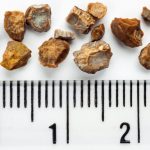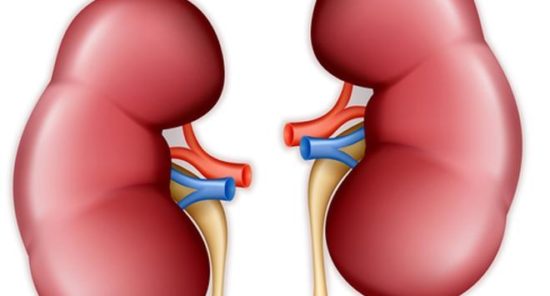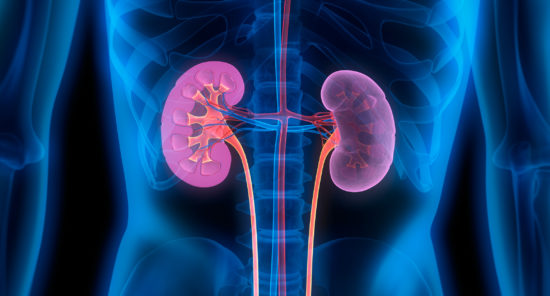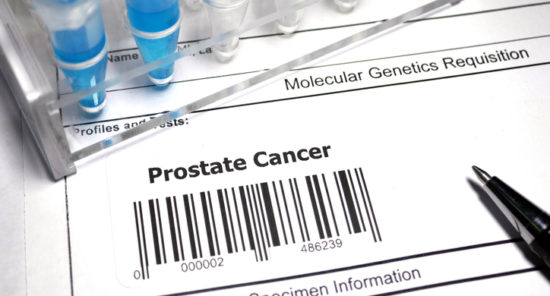
Kidney stones affect approximately one in 11 persons in the United States and up to 50% of those who experience a kidney stone develop a recurrent stone within 10 years of their first stone episode. Primary hyperparathyroidism (PHPT) is present in 3% to 5% of patients with kidney stones; screening for PHPT is a possible strategy for reducing the kidney stone recurrence rate. There are few data available on the rate of screening for PHPT in patients with kidney stones.
The American Urological Association and European Association of Urology recommend measurement of serum calcium concentration in patients with kidney stones followed by measurement of serum parathyroid hormone (PTH) if there is clinical suspicion of PHPT.
Calyani Ganesan, MD, MS, and colleagues conducted a cohort study to test the hypothesis that the frequency of PTH testing remains low despite current clinical practice guidelines and that a wide variation in screening practices is not adequately explained by patient-specific or facility-level factors. Results of the study were reported in JAMA Surgery [2020;155(9):861-868].
The study utilized data from a large national cohort of patients receiving care within the Veterans Health Administration (VHA) healthcare system to examine the prevalence of PTH testing in veterans with kidney stones and hypercalcemia. The researchers also sought to identify the demographic, geographic, and clinical characteristics of veterans who were more or less likely to receive PTH testing.
The data included VHA health records from the Corporate Data Warehouse for veterans who received care in one of 130 VHA facilities in the United States from January 1, 2008, through December 31, 2013. Patients with kidney stones were defined as those with one or more inpatient International Classification of Diseases, Ninth Revision (ICD-9) codes for kidney or ureteral stone procedures within 1 year. Exclusion criteria included previous screening for PHPT.
There were 157,539 unique veterans with a ICD-9 code for a kidney or ureteral stone procedure during the study period. Of those, 139,115 had a serum calcium determination withing 6 months of their index stone diagnosis. Following application of exclusion criteria, the final study cohort comprised 7561 patients with kidney stones and measured hypercalcemia (n=3938) or albumin-corrected hypercalcemia (n=3623).
Mean age of the cohort was 64.3 years, 94.5% (n=7139) were men, and 75.0% (n=5673) were White. Patients with hypercalcemia were more likely than those with normocalcemia (n=124,173) to have diabetes (39.8% [n=3013] vs 29.5% [n=36,655]), impaired kidney function, defined as estimated glomerular filtration rate <45 mL/min/1.73 m2 (36.1% [=2731] vs 15.1% [n=18,775]), osteoporosis (4.4% [n=331] vs 2.1% [n=2626]), and fractures (7.1% [n=535] vs 4.2% [n=5264]).
Of the 7561 eligible patients, 24.8% (n=1873) completed a serum PTH level measurement near the time of their initial stone diagnosis. Among the 3938 patients with measured hypercalcemia, 34.8% (n=1369) completed a serum PTH measurement; only 13.9% (n=504) of the 3623 patients with albumin-corrected hypercalcemia did so.
Of 2624 patients with a Charlson Comorbidity Index score lower than three, 33.6% (n=882) completed a serum PTH level measurement. Patients with measured hypercalcemia with PTH testing versus those with albumin-corrected hypercalcemia were more likely to have had an elevated PTH level (40.8% [n=558] vs 31.5% [n=159]) above the population reference range (P<.001), and a higher median level of 24-hour urine calcium excretion (221 mg vs 104.5 mg; P<.001). Of the 1873 patients with PTH testing, 38.3% (n=717) had an elevated PTH consistent with biochemical PHPT.
Results of multivariable logistic regression models revealed that the odds of PTH testing in patients with kidney stones and hypercalcemia were lower with older age (odds ratio [OR], 0.95 per decade; 95% confidence interval [CI], 0.90-1.00) and among patients with a history of metastatic cancer (OR, 0.63; 95% CI, 0.49-0.81).
Patients with albumin-corrected hypercalcemia were less likely to complete PTH testing compared with patients with measured hypercalcemia (OR, 0.32; 95% CI, 0.28-0.37). There was a direct association between PTH testing and the magnitude of elevation of calcium concentration (OR, 1.07 per 0.1 mg/dL >10.5 mg/dL; 95% CI, 1.05-1.08) and the number of elevated serum calcium concentration measurements (OR, 1.08 per measurement >10.5 mg/dL; 95% CI, 1.06-1.10).
Rates of PTH testing varied among patients who received care in specialty clinics. The odds of PTH testing were higher for patients who visited either a nephrologist or a urologist (OR, 1.56; 95% CI, 1.35-1.81). The odds were much higher for patients who were seen by both a nephrologist and a urologist (OR, 6.57; 95% CI, 5.33-8.10) compared with patients who did not visit a stone specialty clinic during the observation period. Patients seen by an endocrinologist were nearly 5-fold more likely to undergo PTH testing (OR, 4.93; 95% CI, 4.11-5.93).
There was wide variation in the prevalence of PTH testing across the 130 VHA facilities in the United States (range, 4.0%-57.0%).
Limitations to the study findings cited by the authors included the percentage of men in the study population, defining PHPT as the presence of an elevated serum calcium concentration with an elevated serum PTH level measurement and not considering alternative criteria for diagnosing PHPT, the inability to determine whether patients with chronic kidney disease and HPT had primary or secondary HPT with overzealous treatment using oral calcium and/or calcitriol or active vitamin D analogs, and not capturing medical care for veterans with kidney stones who received treatment outside the VHA.
In conclusion, the researchers said, “In this cohort study, a generally low rate of PTH testing was found in veterans with kidney stones and hypercalcemia, and extensive variation in PTH testing rates was found across VHA facilities in the US. More awareness of the level or frequency of elevated serum calcium concentration may be associated with higher rates of PTH testing in patients with kidney stones. Improved screening for PHPT could increase the rates of detection and treatment of PHPT and decrease stone recurrence associated with missed or untreated PHPT.”
Takeaway Points
- Researchers conducted a study to assess the prevalence of parathyroid hormone (PTH) testing in US veterans with kidney stones and hypercalcemia; the study also sought to identify the characteristic of veterans who were more and less likely to receive PTH testing.
- Of the final cohort of veterans with kidney stones and hypercalcemia (n=7561), 24.8% (n=1873) completed a serum PTH level measurement.
- Testing rates across the 130 US Veterans Health Administration facilities varied widely, ranging from 4% to 57%.
Credit: Original article published here.








